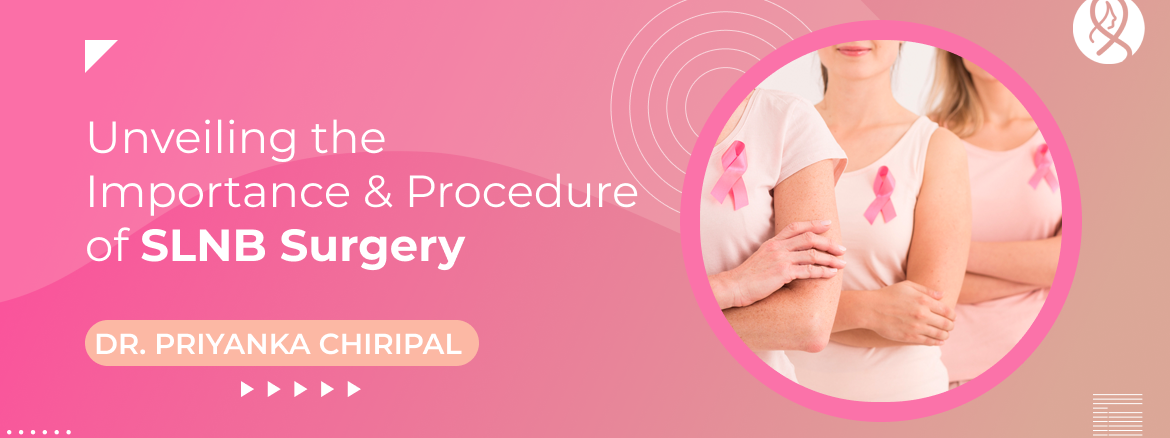Unveiling the Importance and Procedure of Sentinel Lymph Node Biopsy Surgery
Breast cancer, a disease that touches millions of people globally, demands a nuanced approach to treatment. For those who are affected by breast cancer, understanding the role of the available surgical procedures is very important. One crucial aspect of breast cancer surgery that plays a pivotal role in staging and treatment planning is the Sentinel Lymph Node Biopsy (SLNB). This blog aims to shed light on the significance of SLNB, the procedure itself, and its role in a comprehensive approach to breast cancer care.
Understanding the Significance:
What are Sentinel Lymph Nodes?
Sentinel Lymph Nodes are the first few lymph nodes to which cancer cells are most likely to spread from a primary tumor. These nodes act as sentinels, providing valuable information about the extent of cancer’s reach.
The Role of Sentinel Lymph Node Biopsy:
SLNB is a diagnostic procedure that helps determine whether cancer has spread beyond the primary tumor. By examining the sentinel nodes, medical professionals can gather crucial information to guide further treatment decisions.
The Procedure: A Surgical Symphony:
Preoperative Preparations:
Before the surgery, patients undergo imaging tests (such as lymphoscintigraphy) to identify the location of the sentinel nodes. A blue dye or a radioactive substance may be injected near the tumor to trace the lymphatic drainage path.
Anesthesia:
SLNB is typically performed under local anesthesia, although general anesthesia may be used in some cases. The patient remains comfortable and pain-free throughout the procedure.
Sentinel Node Identification:
Using the mapping from preoperative tests, the surgeon identifies and removes the sentinel nodes. A Geiger counter or a gamma probe may be used to detect radioactivity in the nodes.
Biopsy of Sentinel Nodes:
The removed nodes are sent to a pathology lab for examination. If cancer cells are present, it indicates the potential spread of cancer to the lymphatic system.
Role in Staging:
The findings from SLNB contribute crucial information to the staging of breast cancer, guiding decisions about the extent of surgery and the need for additional treatments like chemotherapy or radiation.
Postoperative Care and Recovery:
Minimal Discomfort:
Patients typically experience minimal discomfort after SLNB, with a quicker recovery compared to more extensive lymph node dissection procedures.
Resumption of Normal Activities:
Patients can usually resume normal activities within a few days, with guidelines provided by the surgical team regarding restrictions and self-care.
Follow-Up Appointments:
Regular follow-up appointments are scheduled to monitor healing, discuss pathology results, and plan any necessary additional treatments based on the findings.
Navigating Emotions and Decisions:
Emotional Support:
The period surrounding SLNB can be emotionally charged. Seeking support from loved ones and joining breast cancer support groups can provide emotional resilience.
Informed Decision-Making:
Understanding the significance of SLNB empowers individuals to actively participate in decision-making about their treatment plan. Open communication with the healthcare team is crucial.
Conclusion: Empowering the Journey
Sentinel Lymph Node Biopsy is not merely a surgical procedure; it’s a critical step in the comprehensive management of breast cancer. Through the identification and examination of sentinel nodes, patients and healthcare professionals gain valuable insights into the extent of cancer’s reach. This information, in turn, guides personalized treatment strategies, contributing to a more targeted and effective approach to breast cancer care.
Facing breast cancer requires strength, resilience, and a supportive healthcare team. Sentinel Lymph Node Biopsy stands as a testament to the progress in breast cancer diagnosis and treatment, offering a nuanced understanding that empowers individuals on their journey toward healing.



